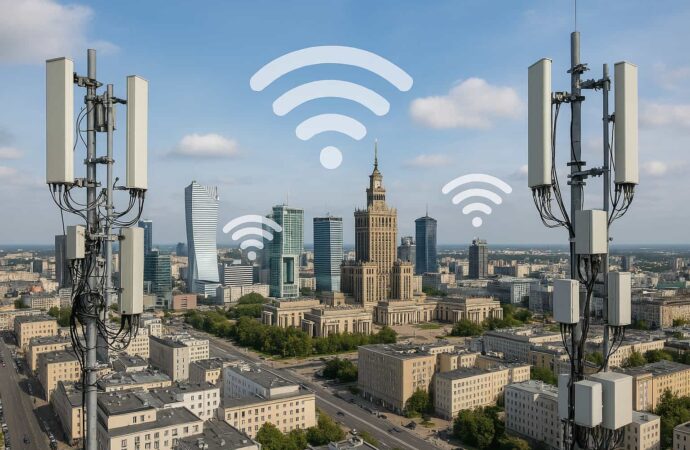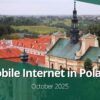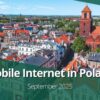Poland has just wrapped up a major spectrum auction, and the results are big news for mobile users across the country. The auction, focused on the 700 MHz and 800 MHz frequency bands, brought in a hefty 2.6 billion PLN. But beyond the numbers, what does this really mean for everyday users? Let’s break it down.
Who Got What?
After just two days of bidding, the outcome was clear — Poland’s four main mobile operators split the frequencies fairly evenly:
- Play (P4 Sp. z o.o.) – won two blocks in the 700 MHz band
- T-Mobile Polska S.A. – secured one block in the 700 MHz band and the single available block in the 800 MHz band
- Orange Polska S.A. – took home two blocks in the 700 MHz band
- Plus (Polkomtel Sp. z o.o.) – grabbed one block in the 700 MHz band
This balanced distribution is a win for competition and promises a more even rollout of new services across all networks.
What’s In It for Mobile Users?
In short: better coverage, faster speeds, and more reliable connections — especially in rural and hard-to-reach areas. These lower-frequency bands are excellent at traveling long distances and penetrating obstacles like building walls, which makes them ideal for covering so-called “white spots” on the digital map — areas still struggling with poor or nonexistent internet access.
And for commuters? The new spectrum will significantly boost service quality along major highways and rail lines, making dropped calls and laggy connections on the move a thing of the past.
As Deputy Minister of Digital Affairs Michał Gramatyka put it:
“This auction result is another important step in fighting digital exclusion. We’re catching up with other European countries that allocated this spectrum years ago.”
Why Are the 700 and 800 MHz Bands So Important?
These frequencies are known as “coverage bands.” Their biggest advantage is their range and penetration. In practical terms, that means fewer dead zones, stronger signal indoors, and a more stable mobile experience overall.
The 700 MHz band, in particular, will be key for expanding Poland’s 5G network. Think smoother connectivity on highways, rural routes, and anywhere mobile service currently leaves much to be desired.
What Are the Operators Committing To?
With great spectrum comes great responsibility. The winning operators are now required to deliver high-quality mobile service to 99% of households across Poland. By 2030, they must ensure a minimum download speed of 120 Mbps — even in areas that have traditionally been left behind.
It’s an ambitious goal, but one that could finally bridge the country’s digital divide.
Cross-Border Cooperation: A Win for the Southeast
One of the biggest technical hurdles was potential interference with Ukrainian networks in southeastern Poland, near the border. Thankfully, diplomatic talks between Poland’s Ministry of Digital Affairs and Ukrainian authorities led to a breakthrough.
“Joint discussions significantly reduced the risk of interference and will ensure optimal frequency use in border areas.”
For residents in those regions, that means a noticeable improvement in mobile service is on the horizon.
What’s Next?
While the auction is over, the work is just beginning. The President of the Office of Electronic Communications (UKE) will now formally assign the frequencies. After that, operators can move forward with investment and infrastructure rollouts.
So, if you’ve been stuck with weak signal and unreliable mobile internet, hang tight — change is coming, and it’s coming fast.










Leave a Comment
Your email address will not be published. Required fields are marked with *